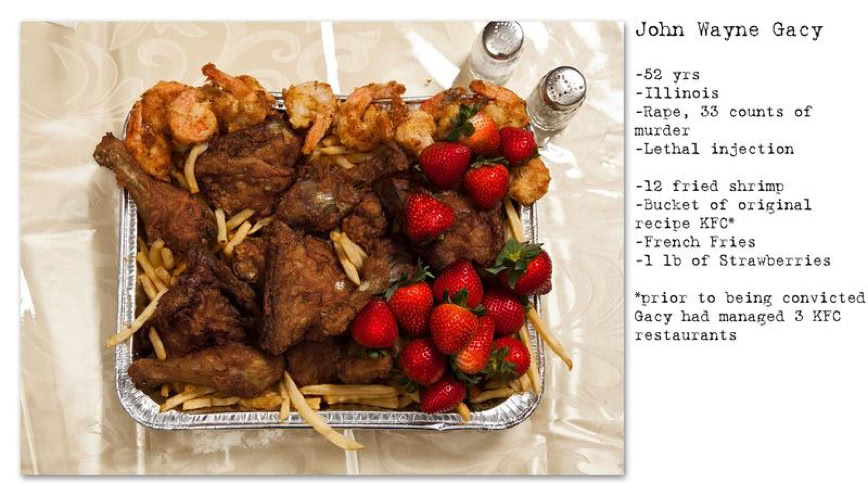
WILD ANIMALS BRING CARNAGE TO FRIGHTENED STREETS OF NEW YORK

ON THE morning of November 9, 1874, panic hit the streets of New York, dangerous animals had escaped from Central Park Zoo after a keeper had been gored to death by a rhinoceros.
Other zookeepers, feeding the animals, rushed to the scene, and somehow in the confusion, the rhinoceros escaped, trampling down the bars of other animal enclosures.
A succession of man-eating beasts including a polar bear, a panther, a Numidian lion, several hyenas, and a Bengal tiger, had slipped from their pens.
They roamed the city during the night and killed 49 people, injuring 200, the New York Herald reported. Under the headline: A Shocking Sabbath Carnival of Death, the Herald reporters diligently captured every detail.
How the panther was seen crouching over a man’s body, “gnawing horribly at his head.” How the African lioness, after “saturating herself in the blood” of several victims, had been shot by a party of Swedish immigrants.
How the rhino had killed a sewing girl named Annie Thomas and then ran north, only to stumble to its death in the bowels of a deep sewer excavation.
The polar bear maimed and killed two men before tramping off towards Central Park’s upper reservoir. Several people drowned as they fled the panthers who ran on to a ferry.
Survivors were taken to Bellevue Hospital where limbs had to be amputated and a schoolgirl died on the operating table. Traffic was diverted; shops and churches closed; restaurants shuttered; police and zookeepers were everywhere, and the National Guard were called in.
Citizens even shot at the animals from their apartment windows.
The Herald sold out by 9am … and a second edition sold out too, even though it cost a much higher price.
The dramatic story, however, was a hoax.
Buried discreetly in the turn on the back pages at the end of the news piece, was the following disclaimer: “The entire story given above is a pure fabrication. Not one word of it is true.”
The city fathers had given no thought to what might happen in an authentic emergency such as a zoo escape, the newspaper said. “How is New York prepared to meet such a catastrophe? From insignificant causes the greatest calamities of history have sprung.”
Here in Britain, newspapers reported the hoax as a distant, sensational event and a notable failure of American journalism ethics, not as a genuine local news story.
But the New York Zoo Hoax was successful in bringing new readers to the paper, although some pledged never to buy it again. Circulation went up, and because of the story, the zoo spent money addressing safety issues and cages that were in disrepair.
The newspaper’s owner, James Gordon Bennett, the man who sent Stanley to find Livingston, loved the sensation it caused because it generated massive awareness of the power of the newspaper to mould public opinion.
It became the biggest newspaper hoax in history.
THE MAN OF MYSTERY WHO LEFT
BEHIND BIGGEST MYSTERY OF ALL
POET and horror writer Edgar Allan Poe was always a man of mystery both in life and in death, it seems.
The writer who gave us such iconic works such as The Fall of the House of Usher; The Murders of the Rue Morgue and The Pit and the Pendulum, died young and even today his passing is as big a mystery as some of his stories.
Poe, 40, known to be an alcoholic, was found in a semi-conscious state, wearing ill-fitting, borrowed clothes, and experiencing hallucinations in the gutter outside Ryan’s Tavern, in Baltimore, Maryland, in 1849. Another night on the booze you might suspect. A doctor did.
He was taken to Washington College Hospital, where he died four days later without ever regaining consciousness.
The attending medic, Dr John J. Moran, reported him as having “phrenitis” (brain inflammation), which could be caused by alcoholism. But days after Poe was buried, his medical records suspiciously disappeared and speculation began in the national Press in America and the UK. Was he murdered?
Moran had guessed his condition as the technology for forensic blood analysis did not exist at that time. His evidence was that he was found outside a pub and was hallucinating. There was no autopsy and even his death certificate went missing.
Could it have been rabies, alcoholism, suicide, or a brain tumour? Perhaps carbon monoxide poisoning? Then another sinister theory made the headlines. Was Poe the victim of cooping?
Cooping was a form of electoral fraud in America. Gangs would kidnap citizens off the street and force them to vote, often repeatedly, for an election candidate.
According to some newspaper reports “cooping gangs” working for a political candidate would hold random victims in a chamber or cellar (the coop) and ply them with alcohol to the point of stupefaction or beat them to get them to comply.
Often their clothing or other aspects of their appearance would be altered to fool voting officials, enabling them to vote multiple times. The fact that Poe, credited as the man who invented the detective story, wasn’t wearing his own clothes was the clue that led to historians, even today, to believe he was a victim.
The area was known for a high incidence of cooping cases and Poe was discovered on election day.
As for drink, friends said he had been cutting down for months. According to nurses he held “vacant conversations with spectral and imaginary objects on the walls in the hospital. His face was pale, and his body drenched in perspiration”.
The Washington Post reported: “Poe turned up on election day, and the tavern where he was found served as a polling place as Marylanders chose their representatives in Congress.
“In the area, ruffians would go out in the street, find someone vulnerable and indigent, hit them over the head, coop them up in a room, and feed them alcohol and maybe opium until it was time to vote.
“They would change the man’s appearance throughout the day, so he could cast multiple votes, and the new clothes might not fit.”
The night before his death, according to Moran, Poe repeatedly called out the name of a man named Reynolds, a figure who, to this day, remains a mystery.
Grave fact: More than 160 years after his death, Poe was given a funeral worthy of his place in the history of literary fiction when a replica of his body was pulled through the streets of Baltimore, where hundreds turned out to see him get the funeral he deserved.
Last meal of convicted killer Gacy on Death Row
PHOTOGRAPHER DISHES UP A BOOK OF
DINNERS FOR THE GUESTS ON DEATH ROW
Photographer Henry Hargreaves was looking for new ideas when he read in the Press about a prisoner on Death Row in Texas being asked what he wanted for his last meal.
The result was a picture book of last meals for people who committed the most chilling of crimes and were about to die.
The idea came to him as quick as a flash of his camera bulb. “This little bit of civility, seemed surreal to me,” he said.
“The State is saying, ‘hey, we are going to kill you, but what do you fancy to eat?’ How bizarre.
Henry, who is regarded as one of the best commercial and conceptual still life photographers of his generation, lives in Brooklyn and works for NY Magazine, National Geographic, and The New York Times.
He set about researching more on last dinner requests of men and women facing the electric chair or lethal injection.
“I felt a sense of empathy for these people,” he said. Up until now they had generally been depicted by newspapers as bad people, monsters, meeting their deserved end.
“Now through this common denominator of food they became more than just a statistic and were strangely personalised.
“It made me curious about the entire justice system and how certain people are deemed bad enough to not walk the earth anymore but free to eat what they want on it.”
His book title might amuse some people, but it is a deadly earnest project, he says. It’s called No Seconds.
One of the featured meals is the choice of Death Row inmate John Wayne Gacy, 58, who was killed in May 1978, by lethal injection after being found guilty of 33 murders in Illinois. He had a healthy appetite and stuffed:
12 fried shrimps; a large bucket of original Kentucky Fried Chicken; large French fries … followed by 1lb of strawberries.
Prior to being convicted Gacy managed three KFC restaurants.
A LIFE OF REGRETS REMEMBERED TOO LATE
While on the taboo subject of death, I came across an intriguing book reviewed by several UK newspapers on the dying regrets of people in their final hours. Morbid perhaps, but interesting none the less.
Surprisingly, the wishes weren’t all about a bucket list of climbing Everest; going beneath the waves in a submarine or seeing Elvis Presley’s last concert. They were really rather mundane.
Bronnie Ware is an Australian nurse who spent several years working in palliative care, caring for patients in the last 12 weeks of their lives. She recorded their dying epiphanies in a blog which gathered so much attention in the Press that she wrote a book called The Top Five Regrets of Dying.
She writes about the clarity of vision that people gain at the end of their lives, and how we might learn from their wisdom.
“When questioned about any regrets they had or anything they would do differently,” she says, “common themes surfaced again and again.”
Here they are:
1. I wish I’d had the courage to live a life true to myself, not the life others expected of me.
“This was the most common regret of all. When people realise that their life is almost over and look back clearly on it, it is easy to see how many dreams have gone unfulfilled. Health brings a freedom very few realise, until they no longer have it.”
2. I wish I hadn’t worked so hard.
“This came from every male patient that I nursed,” says Bronnie. “They missed their children’s youth and their partner’s companionship. They all deeply regretted spending so much of their lives on the treadmill of a work existence.”
3. I wish I’d had the courage to express my feelings.
Bronnie says: “Many people suppressed their feelings in order to keep peace with others. As a result, they settled for a mediocre existence and never became who they were truly capable of becoming.”
4. I wish I had stayed in touch with my friends.
“Often they would not truly realise the full benefits of old friends until their dying weeks, and it was not always possible to track them down. Many had let golden friendships slip by over the years. Everyone misses their friends when they are dying.”
5. I wish that I had let myself be happier.
“This is a common one. Many did not realise until the end that happiness is a choice. They had stayed stuck in old patterns and habits. Fear of change had them pretending to others, and to themselves. Deep within, they longed to laugh properly and have silliness in their life again.”
TERRY MANNERS
17 November 2025


